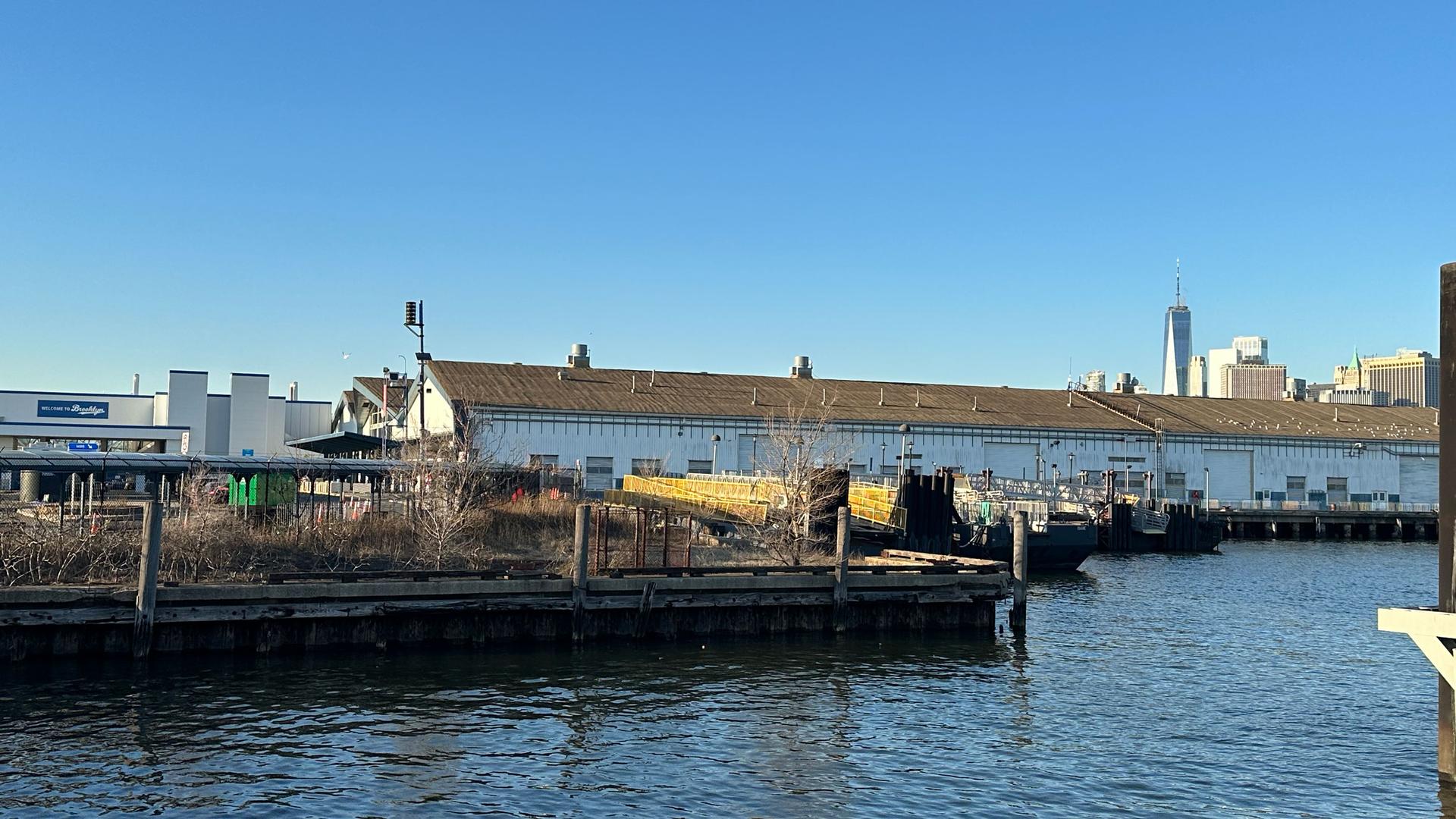Controversy erupted this week over New York City’s decision to move a group of single, migrant men from a Manhattan hotel, where they had been housed for months, to a new reception center created inside a cruise ship terminal on Brooklyn’s waterfront.
Many of the men refused to go and ended up holding protests and camping for several nights on the sidewalk. The city justified the move, saying it needed the hotel space to house migrant families instead.
New York City has absorbed a large influx of migrants and asylum-seekers since last spring, when states such as Texas and Arizona began bussing them north from the border. The city said almost 44,000 migrants have come through its intake system since last spring.
Mayor Eric Adams has said New York, as a sanctuary city, is committed to welcoming immigrants but its services are under incredible strain.
“Once the asylum-seekers from today’s buses are provided shelter, we will surpass the highest number of people in recorded history in our city’s shelter system,” the mayor said in October, when declaring a state of emergency.
“And every day going forward that we add more to this count, we break another record.”

This new reception center is housed inside of a massive cruise terminal in Brooklyn’s Red Hook neighborhood that faces the Statue of Liberty, in New York Harbor. Immigrants sleep on camping cots, with no privacy and limited bathrooms.
The location is also an issue. Red Hook is not close to a subway station, which makes it difficult for residents to get to work. To remedy that, the city is providing free buses and ferries to the migrants living there. The site is set up to house 1,000 men until this spring, when cruise ships will be back.
The local volunteer organization Red Hook Mutual Aid Society has set up a welcome center near the cruise terminal where migrants can pick up food and clothes, as many of them do not have proper clothing for New York’s winter temperatures. They will also offer English classes.

Many of the new arrivals are coming from Venezuela, where people are fleeing political and economic upheaval. There are more than 7 million Venezuelan refugees and migrants all over the world, making its displaced citizens the third-largest group internationally after Syria and Ukraine.
On a blustery cold afternoon this week, Venezuelan José Perez, 26, stood with a group of friends outside the cruise terminal and agreed to talk about his journey to New York. Perez, originally from Puerto La Cruz, on the eastern coast of Venezuela, arrived in New York three months ago.
He used to work at a bank in Venezuela and was studying business administration in college. He said he decided to leave his country because he couldn’t survive on his salary.
“Minimum wage in Venezuela is between $7 and $10 a month and with that, I had to pay university, gas, car insurance,” Perez said, who, after leaving Venezuela four years ago, lived in Brazil for two years, Chile for one year, then Peru and Ecuador.

To arrive at the US border in El Paso, Texas, Perez crossed through the Darién Gap, which is a dangerous forested area between Colombia and Panama. His journey with several friends took three months.
“At night, as people were setting camp, it looked like the apocalypse, there was nothing to eat, it was horrible,” he said.
His hope is that New York will be a place where he can build a new life and bring his family. His wife is in Chile, and his parents are in Venezuela. He has one sister in Colombia and another in Costa Rica.
Perez said it was his decision to come to New York City.
“They told us that here was a sanctuary place, that we could be more at ease, not like in other states, that here they would support us more,” he said.
Last year, he had found temporary work cleaning and repairing chimneys but he is now unemployed.
Perez hasn’t yet applied for asylum, but he does have an appointment with a lawyer at the end of February.

Lengthy asylum process
Niurka Meléndez, a Venezuelan migrant herself and the co-founder and co-director of the nonprofit Venezuelans and Immigrants Aid (VIA), knows that the asylum process can be long and complicated.
“I applied in March of 2015 and this coming March is going to be seven years waiting for my first interview,” Meléndez said, adding that she has a work permit because her asylum request is pending.
Her organization provides legal orientation, humanitarian help, English classes and emotional support to Venezuelan migrants in New York. She believes the city government should do more for immigrants than the basic services it offers, such as accommodation, medical care and food.
“If you ask me, OK, it’s like a good Band-Aid, but they need more than that, they need legal orientation, and they can do that,” she said.
Last month, the Biden administration changed its policy toward migrants from Venezuela, Cuba, Haiti and Nicaragua, ruling that they can no longer apply for asylum if they cross illegally into the United States.
The administration said that up to 30,000 people from those four countries would be allowed to enter legally each month, but only if they can buy a plane ticket, get a sponsor, pass a background check and meet other requirements.
As a result, the number of people crossing the US-Mexico border from these four countries is decreasing. The US Department of Homeland Security said this week that border apprehensions of people from these countries fell to about 100 a day from more than 3,000 a day in December.
In New York, about 150 to 200 migrants continue to arrive in the city each day, the Mayor’s Office of Immigrant Affairs said in a tweet on Feb. 2.
